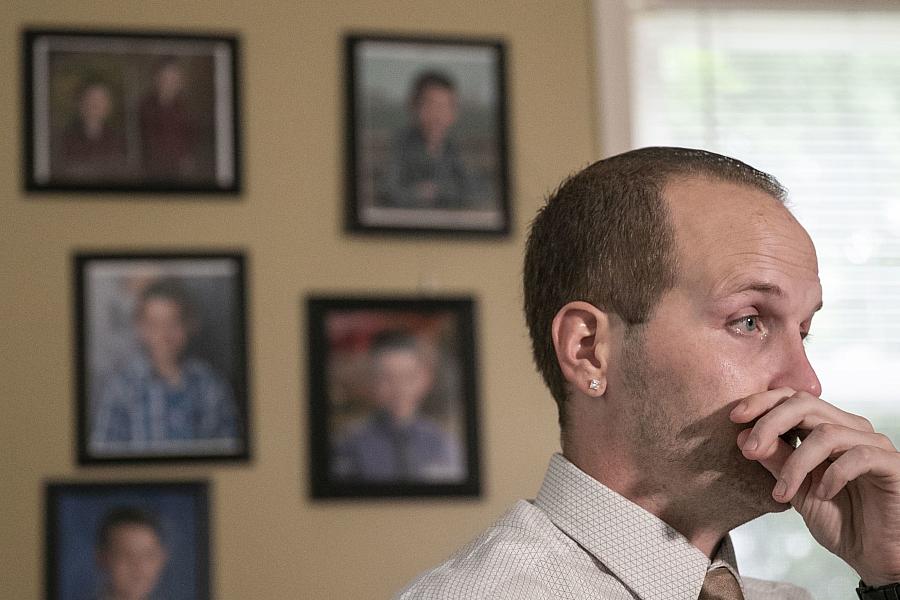How I uncovered decades of abuse at a 'model' reform school — and spurred sweeping state policy change

(Photo: Heather Khalifa/Philadelphia Inquirer)
When I joined The Philadelphia Inquirer’s investigation team, I was nervous. It was June 2018, and I had never lived in Philadelphia, let alone probed the city for corruption or wrongdoing. But I quickly got a tip that an incident at the Glen Mills Schools — the nation’s oldest reform school, an hour away — had led Philadelphia to suspend intake. All I had heard about Glen Mills was that it was the best juvenile justice program in the area, and, arguably, the country. I began reporting, and in February 2019, I published a piece exposing decades of child abuse and cover-ups at Glen Mills.
Within days, the director and board president stepped down. Within six weeks, Pennsylvania revoked Glen Mills’ 14 licenses, shutting down the school after nearly 200 years. But I kept wondering: Why had the state failed to detect or stop the violence at Glen Mills for so long?
The resulting piece, “On Their Own,” drew on my experience as a USC Annenberg Data Fellow. Working with my mentor, Cheryl Phillips, I sought to use data and documents to show how the state Department of Human Services (DHS) failed in its duty to oversee Glen Mills and juvenile justice programs like it.
Here’s a key example of how my fellowship helped me to do that. Every year, DHS was required to conduct an inspection of Glen Mills, interviewing students and flagging incidents of potential abuse. Additionally, DHS came out to Glen Mills whenever a complaint of violence was called into its abuse-reporting hotline. Ten years of these inspection reports were available online. But these hundreds of reports were all individual, narrative-style uploads, making it difficult to see the larger pattern. And because the state separately licensed each building at Glen Mills, they were stored as 14 different programs.
Using the lessons from my fellowship, I built a database out of these documents. My columns included the date of the inspection; whether or not the inspection was announced; the reason inspectors came out; and whether abuse was documented. I then played around, sorting the Excel spreadsheet by date and running pivot tables.
I found that DHS inspectors had responded to Glen Mills over six episodes of abuse in less than six months. But because DHS separately licensed each building, it looked to the agency as if one incident of violence occurred at each of six facilities. This important finding allowed me to demonstrate the danger of the state’s licensing system.
Working with Cheryl, I filed a public records request for three years of “Serious Incident Reports” at Glen Mills. State law required programs like Glen Mills to submit these reports any time a student ran away, injured himself or alleged abuse, among other things.
It took several months of arguing with DHS lawyers to obtain the reports. Once I got them, I spent weeks reading them and creating a second database. It allowed me to analyze rates of “accidental injuries” at Glen Mills. (In reality, boys were beaten and then forced to lie about the cause of their bruises and broken bones.) I was able to show how often students ran away from the program and how little follow-through there was from the state on why these boys were running away.
Crucially, these documents allowed me to illustrate how often DHS investigated counselors for abuse and cleared them, despite witness testimony or photographic evidence. For example, I showed that a counselor who was fired for abusing a 17-year-old in 2018 had been investigated multiple times before by DHS. Because the “investigations” were so cursory, he was cleared each time, to continue abusing children.
These findings were powerful in driving change. Citing my reporting, Pennsylvania Gov. Tom Wolf announced a sweeping overhaul of DHS and the state’s oversight of programs like Glen Mills. The state has procured a new licensing system and updated its protocols for investigating runaways and injury reports.
The governor also formed a juvenile justice task force, and the state is partnering with Pew Charitable Trusts to seek further reforms. Finally, the state legislature budgeted an additional $5 million for better training and increased staffing at juvenile programs.
Now that we’re in a pandemic, I am especially grateful that the state took swift action to close Glen Mills and revisit its oversight of justice programs for children. Because of the virus, juvenile justice facilities have stopped allowing visitors, and state inspectors have paused their visits. There are fewer eyes than ever on these institutions, making policy standards even more crucial.
There has been a movement, locally and nationally, to release youth from justice programs to curb the spread of the coronavirus. Although these efforts have been successful in releasing youth in many cases, in others they have stalled. Juvenile Law Center filed a petition with the state Supreme Court to usher the release of all youth in detention. The Philadelphia-based legal nonprofit was not successful, but it has started a broader conversation.
In Philadelphia, the public defender’s office has been working with the district attorney to release particularly vulnerable youth, including those who have medical conditions or are pregnant.
When the pandemic is over, it will be interesting to see if we continue to look for ways to keep children out of facilities like Glen Mills.
Read Lisa Gartner’s fellowship stories here.

